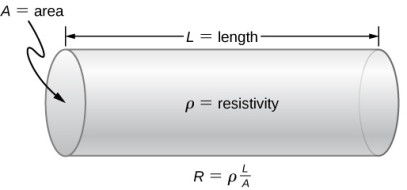Resistivity Calculator
Understanding Resistivity

Resistivity (\( \rho \)) quantifies how strongly a material opposes the flow of electric current. It is
calculated using the formula:
\[\rho = \frac{R \cdot A}{L}\]
Where:
- \( \rho \): Resistivity (Ω·m)
- \( R \): Resistance (Ω)
- \( A \): Cross-sectional area (m²)
- \( L \): Length of the material (m)
Example Calculations
Example 1
Given:
- \( R = 10 \, \Omega \)
- \( A = 0.5 \, \text{mm}^2 = 0.0000005 \, \text{m}^2 \)
- \( L = 2 \, \text{m} \)
Calculation:
\[\rho = \frac{R \cdot A}{L} = \frac{10 \cdot 0.0000005}{2} = 2.5 \times 10^{-6} \, \Omega \cdot \text{m}\]
Result: \( \rho = 2.5 \times 10^{-6} \, \Omega \cdot \text{m} \)
Example 2
Given:
- \( R = 5 \, \text{k} \Omega = 5000 \, \Omega \)
- \( A = 1 \, \text{cm}^2 = 0.0001 \, \text{m}^2 \)
- \( L = 50 \, \text{cm} = 0.5 \, \text{m} \)
Calculation:
\[\rho = \frac{R \cdot A}{L} = \frac{5000 \cdot 0.0001}{0.5} = 1 \, \Omega \cdot \text{m}\]
Result: \( \rho = 1 \, \Omega \cdot \text{m} \)
Typical Resistivity Values
- Silver: \( 1.59 \times 10^{-8} \, \Omega \cdot \text{m} \)
- Copper: \( 1.68 \times 10^{-8} \, \Omega \cdot \text{m} \)
- Aluminum: \( 2.82 \times 10^{-8} \, \Omega \cdot \text{m} \)
- Iron: \( 9.71 \times 10^{-8} \, \Omega \cdot \text{m} \)
- Silicon: \( 640 \, \Omega \cdot \text{m} \)
